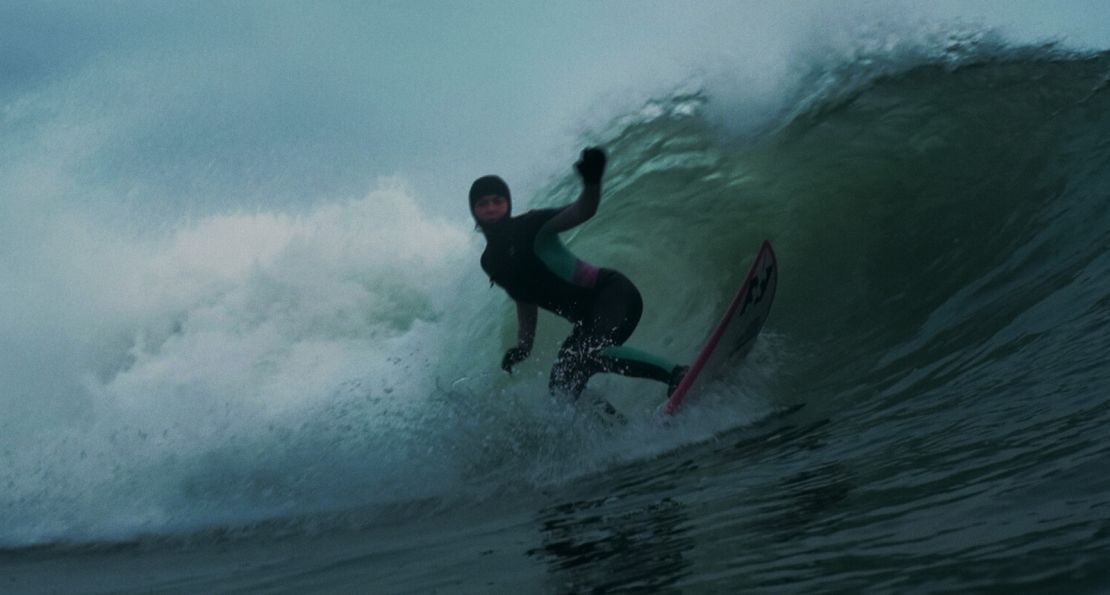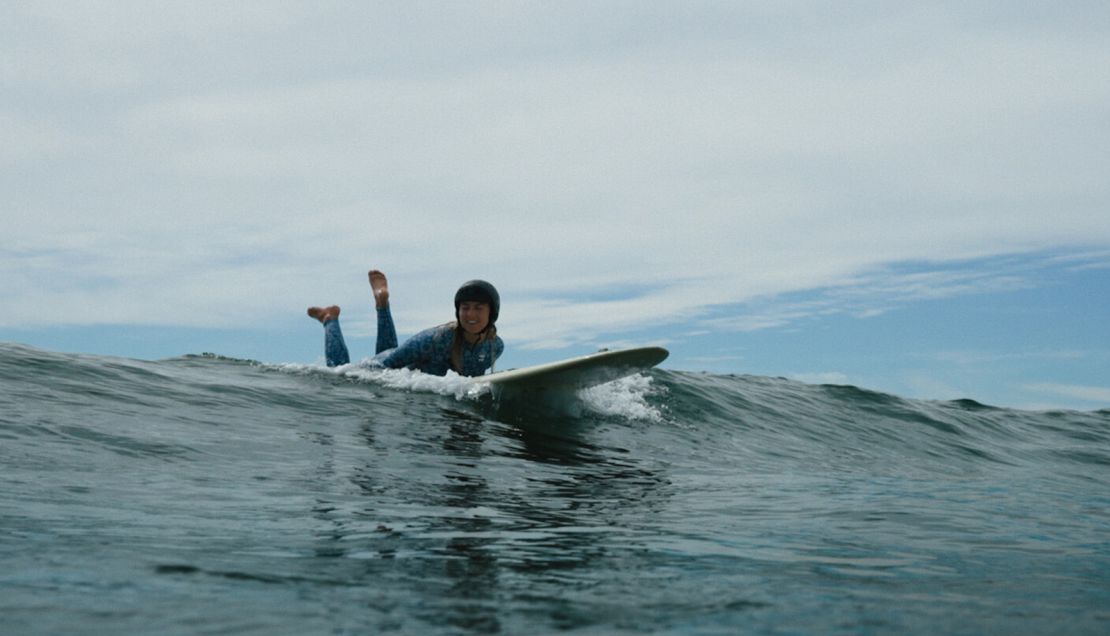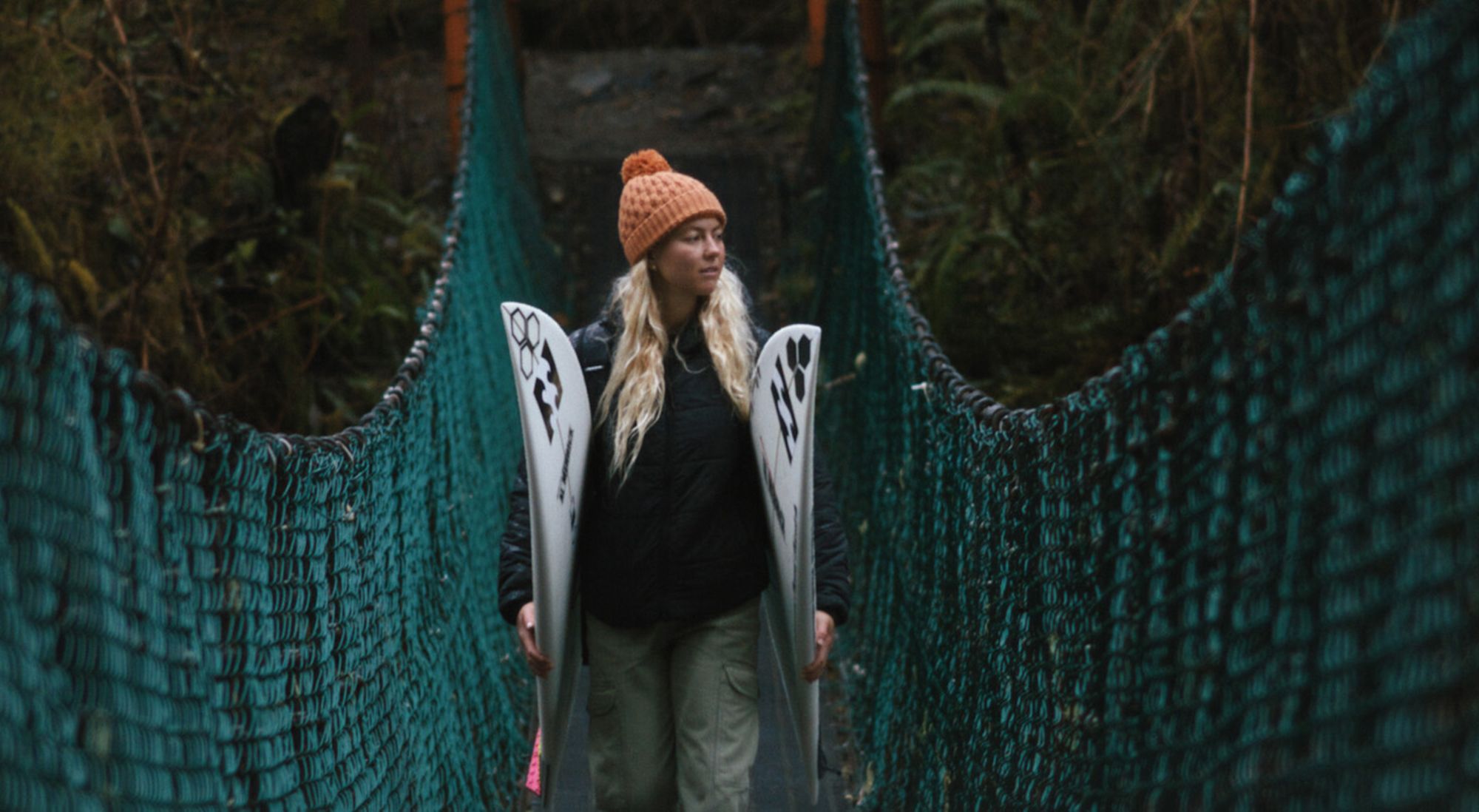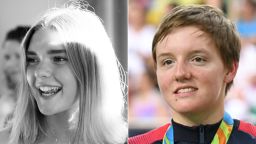At 23, only a few years into her professional surfing career, Becca Speak was sponsored by brands including Billabong, entering competitions and performing at the top of her game. She was enjoying her life and had lots to look forward to.
But in an instant, she says, the sport that had given her life so much meaning “took so much away from me” when she sustained a serious head injury during a surf competition and was left unable to speak.
“As soon as I hit my head, I went paralyzed for a moment,” Speak told CNN Sport of the accident, which took place in a concrete wave pool.
“I didn’t really know what was happening. I just knew I couldn’t move my body, and I remember just being under the water, like, just crying, ‘please, please, please’ … not quite sure what’s happening, but I just knew I couldn’t move, and it was really scary.”
Dragged from the water by friends who were watching her compete, Speak wasn’t sure whether something was seriously wrong but went to the hospital as the injury had left her bleeding. On the way, she started to experience delays with her speech.

“It felt like the connection from my brain to my mouth wasn’t quite there,” she adds, but she returned home after hospital scans showed that “everything looked okay structurally.”
But over the course of the few days, Speak says, she felt a little bit worse.
“Eventually I felt like I was falling into a vegetative state, almost. I could barely put a couple words together. I was very overstimulated by the smallest things, just the sound of someone talking or the light from my phone or outside. Everything was just really overwhelming.”
After a second trip to hospital, doctors confirmed that Speak had sustained a traumatic brain injury (TBI), her sixth after a lifetime of enjoying sports including gymnastics, skiing, snowboarding, skateboarding and swimming.
What followed was a grueling months-long recovery consisting of physical and cognitive therapy, a journey that is chronicled in the new film “Beyond Normal.”
It took the surfer some three months to regain her normal speech patterns and even longer before she felt physically and mentally well again, thanks to neurological treatments, hyperbaric oxygen therapy and transcranial magnetic stimulation, and physical rehabilitation.
“Most of the time, people tell you, ‘Oh, you’re fine. Shake it off,’ because brain injuries are an invisible injury they can’t really see or no one can see what’s happening, you know, on the inside, because you look fine from the outside,” explains Speak.
A lifelong journey
“I think this is a comeback story that maybe has been told a few times before, but I would think one of the unique parts of Becca’s story is how she’s explored all of these new evolving technologies that exist that didn’t exist five, 10 years ago,” director and filmmaker Jordyn Romero tells CNN.
Romero has her own experience with head injuries, after sustaining a TBI snowboarding while she was in high school.
“I don’t remember a whole week of my life. It was a pretty serious brain injury,” she told CNN Sport.
However, she returned to cross-country training just a week later, thinking she had healed – and still feels some of the effects today.
Romero and co-director Anna Wilder Burns wanted to use Speak’s story to raise awareness of the impact of brain injuries.
Burns, who was a gymnast turned diver in college, says her understanding of concussions as an athlete growing up was similar to a lot of coaches, which is: you can’t see it, so it doesn’t feel as real as something like a broken ankle.
“I had a teammate who had a really long concussion recovery, and I remember being kind of confused, like, ‘why is it taking so long? It’s a concussion,’ ” Burns adds.

A concussion happens after a “bump, blow, or jolt to the head” or “a hit to the body that causes the head and brain to move quickly back and forth,” according to guidance from the US Centers for Disease Control and Prevention.
Any of these sudden movements can cause “the brain to bounce around or twist in the skull,” “chemical changes in the brain” and/or the “stretching and damaging” of brain cells, the CDC says.
These changes can lead to symptoms, such as feeling dizzy or disoriented in the moment, or longer-lasting issues with sleep, memory, learning and even personality changes.
Additionally, experts warn that subconcussive head impacts – repetitive hits to the head and body that do not cause symptoms – can still result in long-term neurological disease.
The filmmakers credit a close and trusting relationship with Speak as key to allowing them to make an “intimate and vulnerable” film about her recovery, which took over two years to film.
Throughout her treatment, Speak realized she had been living with the effects of her untreated head injuries for most of her adult life.
While trying to get back to “normal,” she says, she realized she didn’t even know what that would mean, given the effect of her previous injuries.
“A doctor one day said, ‘you have to get beyond what you think is normal.’ And that sort of became a mantra for me throughout the healing journey,” she explains.
“This is just going to be a sort of lifelong journey for me, I think, and I’ve accepted that, and I’m OK with it,” Speak adds.

The surfer says she has found a way to immerse herself in surfing once more, a sport that she “fell in love with” because “it was so free: it’s just you and Mother Nature.”
Her accident almost changed that, she tells CNN, admitting that for a year, “I didn’t know if I ever even wanted to surf again.”
“I had a lot of resentment towards surfing, because it took so much away from me.”
However, she eventually got to thinking she might try it again – even if it was scary. Now, Speak once again surfs every day but now wears a foam helmet.
“It’s like the next chapter of my life, and my goals are bigger than ever. Some days are still harder than others, and I’m trying to find that balance of pushing myself but also taking the time to rest and recover so I can accomplish all the things I want to do,” she adds.




